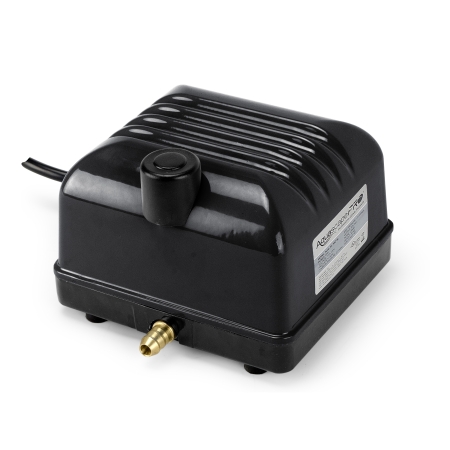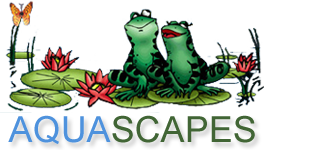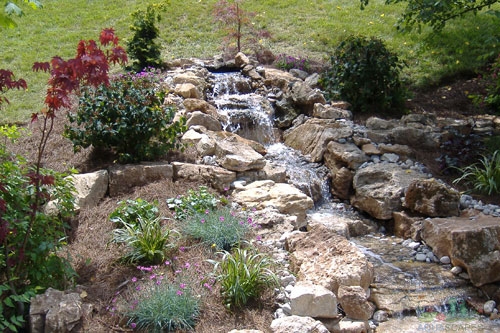™The IonGen™ G2 electronic water clarifier for Ponds, Pondless® Waterfalls and other decorative water features drastically reduces maintenance of string algae without the use of chemicals.
- Significantly decreases string algae that normally attaches to the rocks and gravel throughout the stream, waterfall, and pond.
- Now EPA Approved for maintenance of string algae.
- Not a chemical water treatment.
- Safe to be used with fish and plants
- Treats up to 25,000 gallons
- Easy to install with the included selection of fittings and no tools are required to install
- No tools required for electrical connections using easy to install quick connectors.
- Includes 15 ft of cable
- Operate the IonGen at a low ionization level (recommended 2 or 3 setting) and only raise the ionization level when needed. This prolongs the life of the Probe. When you have Koi, if you raise the setting, make sure you are testing the water for copper.
- Energy Efficient – uses less than 1 watt of energy a month
Components:
Control Panel – Touch pads allow the user to adjust the level of copper ions produced based on the condition of the water feature. A microprocessor in the Control Panel sends a signal to the Probe causing the outermost metal atoms of the Probe’s bars to lose an electron creating a positive ion. The positive ion attempts to flow from one bar to the other and is swept away by the flowing water and dispersing it into the water feature. It is recommended that the monitor panel be mounted.
The Probe – Copper/Metal bars are activated by the control panel and slowly dissolve into the water. The Probe can be installed directly in the skimmer using the Flow Chamber included with the system. Should be changed every year in the spring. If IonGen is not working check the probe as you may need to scrape the oxidation build up on the prongs or replace it if it is wore down.
Installation of the Probe – The Probe can also be installed without the flow chamber by hanging it directly into a filter with good water flow, such as the skimmer. You might like to use the IonGen G2 Probe Holder which allows installation without Flow Chamber. Straps onto any pipe from 1 to 4 inches in diameter and can be attach to the Check Valve. This allows you to have good water flow for the efficient use of the IonGen.. The Probe is replaceable and will last typically about one season, depending on usage. The Control Panel will read 00 when the Probe is completely exhausted or if there is a fault in the operation of the system.
Troubleshooting and Questions
- To adjust the amount of ions – manually raise or lower the ionization level using the + and – buttons.
- Full ionization power will exhaust the probe at a faster rate and may cause copper levels to raise which is not healthy for Koi. Keep level around 3.
- Larger ponds or ponds with poor water conditions will take a longer time to achieve the desired results.
- When using in a pond, you still must use a beneficial bacteria to keep the balance in your pond. This item does not clear green water.
The Importance of Understanding Alkalinity to the success of the IonGen™
- A good range of alkalinity level is between 100-250 mg/L (ppm)
- Copper ions become ineffective if the alkalinity is about 250 mg/L (ppm)
- To reduce alkalinity if it is too high is to do a partial water change. Use your alkalinity test kit to make sure the tap water falls between the good Alkalinity range of 100-250 mg/L (ppm)
- If you have fish, do not operate below 100 mg/L (ppm)!
- Note, baking soda is an easy way to raise low alkalinity levels. Adding 1/4 cup per 1,000 gallons will typically raise it by 10 mg/L (ppm). Should be conduced over a period of days.
- High evaporation can change the alkalinity to a higher rate and continue to elevate as the minerals are left behind and additional minerals are added with the new water used to top off the water feature.
- Too high of alkalinity may be a reason why you don’t see results with ionization or had good results, but then you will notice it decline later in the season. To reduce alkalinity if it gets too high is conduct a partial water change.
Why is the ionization light flashing green? or Why can’t I raise the ionization level to full power in the panel?
This is typically related to insufficient water flow across the probe or insufficient water conductivity. Never operate the IonGen at full power when you have fish.
Solution:
1. Make sure the probe is receiving enough water flow. Try moving the probe around in the filter to increase the flow. If installed directly in the line, there will be more than enough flow.
2. Inspect the probe and remove debris or scrape away scale build up. Bluish green scale indicates insufficient water flow in the location.
Why can’t I raise the ionization level to full power?
G1 solution (panel with bars) – Make sure the red dot on the top of the probe cap is orientated in line with the direction of the water flow. This will maximize the distribution of ions into the flow of water.
Conductivity in the water may be too low – Verify you have enough flow and inspect the probe. Still have flashing light or can’t raise the ionization level, you may need to increase the conductivity of the water. Add a small quantity of Pond Salt (1/2 cup per 100 gallons) to the water. This raises the conductivity and provides the Control Panel the ability to increase the activation and release of ions. This method also will increase the rate at which the Probe exhausts.
Lower the ionization levels once desired results are achieved. This prolongs life of probe and makes sure copper level does not exceed 0.25 ppm.
Unnecessarily maintaining the IonGen at full ionization power will exhaust the probe at a faster rate and could be harmful to your fish.
Periodically test the copper level in the water to make sure it does not exceed 0.25 ppm.
Why does my water appear to be stained brown or brownish-green?
This is more than likely the result of organic debris decomposing in the water feature.
Suggestions for clearing the water:
1. Use a debris net to physically remove organic matter from the bottom of the pond.
2. Rapid Clear Flocculent clears cloudy or discolored water. Use in conjunction with Rapid Clear Fine Filter Pad.
3. SAB Stream and Pond Clean contains bacteria and enzymes to help speed up and complete the bread down of organic debris. Also incudes a powerful phosphate binder.
4. Water changes. Remember to a Pond Detoxifier when adding tap water to remove chlorine and chloramines.
Should I operate the IonGen during the Winter?
No, it is recommended to shut down the IonGen system where climates are cold in the winter. Remove the panel and store inside.
 Aquascape Pro Air 20 Aeration Compressor
Aquascape Pro Air 20 Aeration Compressor 


 Meyer Aquascapes
Meyer Aquascapes